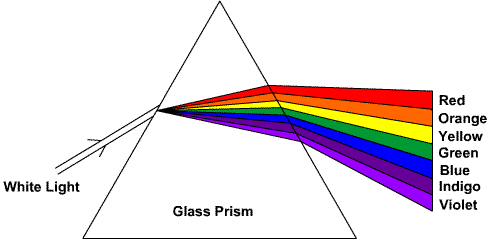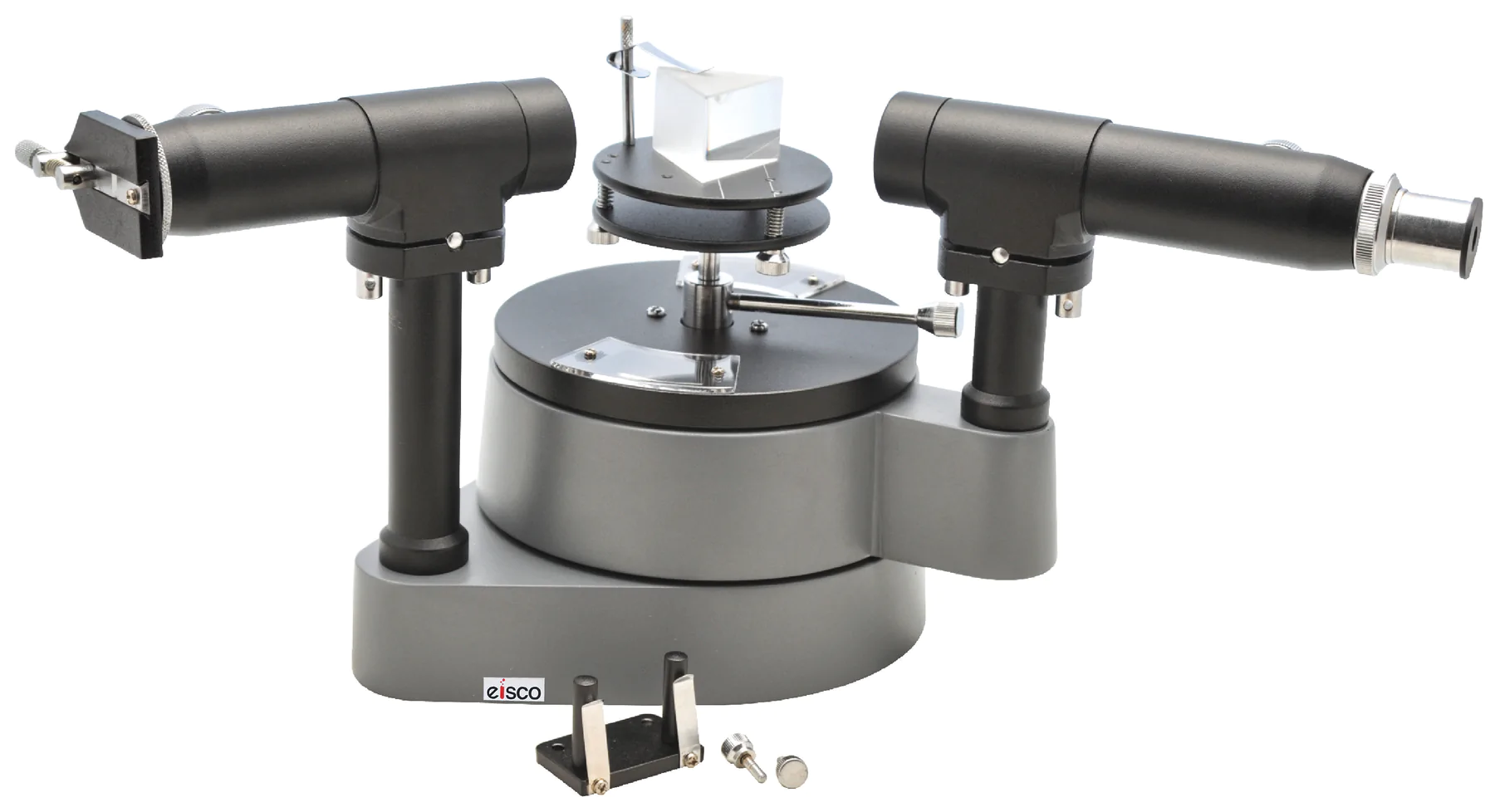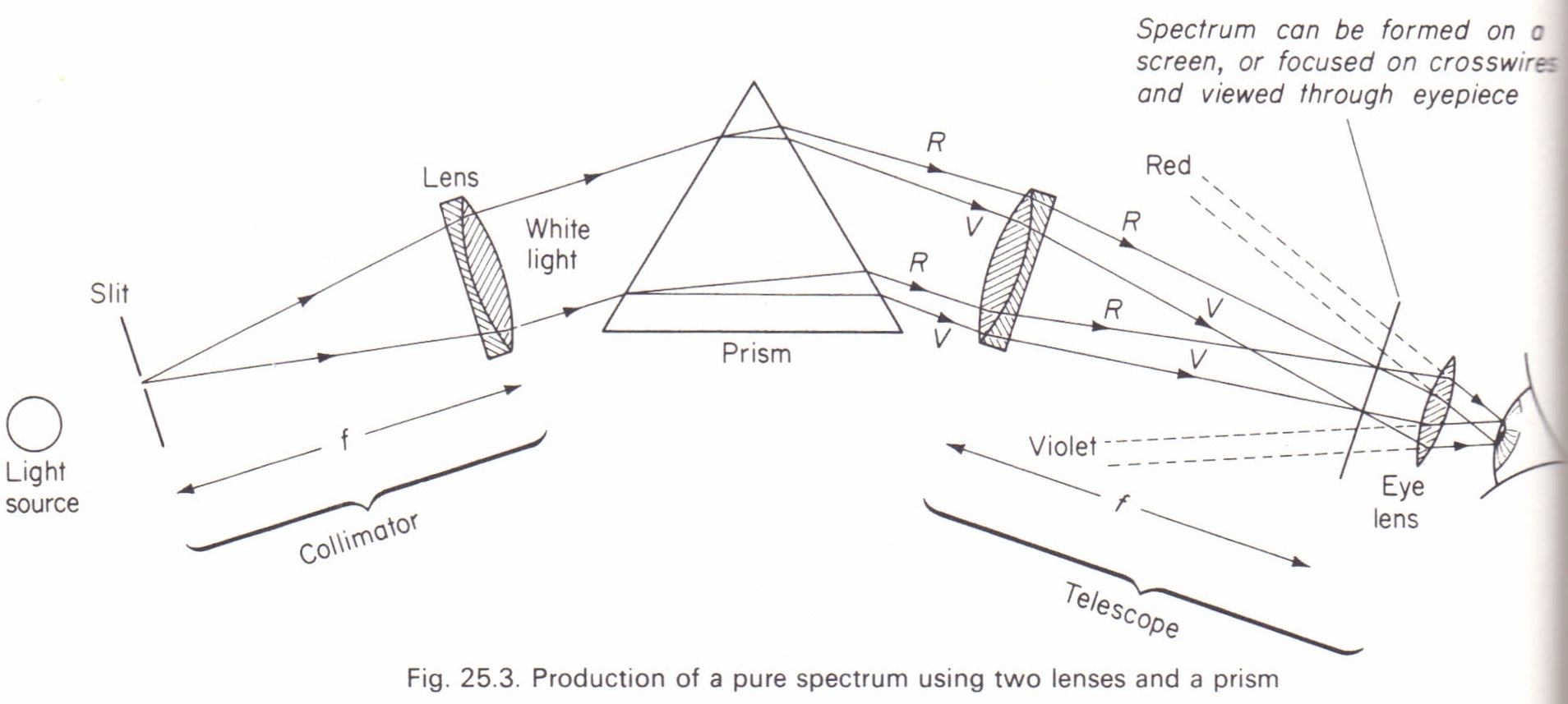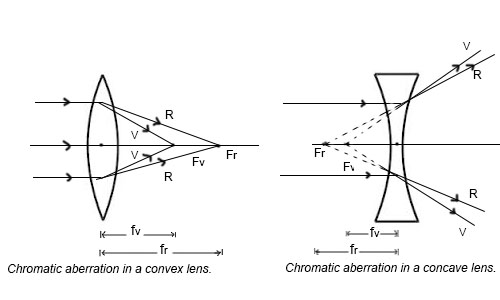Dispersion of light
The phenomenon of splitting of white light into its constituent colours is called dispersion of light.
The band of seven colours obtained on the screen is called spectrum of white light.

Spectrometer is an optical device used to produce the spectrum of light from a source and to measure the refractive index of the material in the form of prism for different device.

A spectrometer essentially consists of three components: collimator, prism table and telescope as shown in figure above.
Spectrum: A collection of dispersed light which gives its wavelength composition is called the spectrum.
Pure spectrum: If the spectrum on the screen in which the splitted colours don't overlap to each other, all colours can be seen distinctly and this is called the pure spectrum.
Impure spectrum: If the splitted rays overlap to each other, all colours can't be seen distinctly on the screen. Such spectrums is called the impure spectrum.

Angular dispersion: The angular dispersion is defined as the angle between the two extreme colours of light (i.e. violet and red colours)

Dispersive power of a prism is defined as the ratio of angular dispersion to the deviation of mean colour.
Chromatic combination of a lens: The inability of a lens to focus all colours of light at a single point is called the chromatic aberration.

Achromatic combination of a lens: The combination of two thin lenses in which their combination of free from chromatic aberration is called the achromatic combination of lenses.

Removal of spherical aberration in lens:
- By using stop
- By using plano-convex lenses
- By using two lenses separated by a distance
- By combining suitable concave and convex lenses
Scattering of light: On being accelerated by the electric field, the electric charge emits radiation in all the directions, and this process is called scattering.
amount of scattering
- Sky appears black in the day as it is at night on the moon.
- A blue object in the sodium lamp (yellow light) appears black.
- Dispersive power only depends on the refractive index.
- Primary rainbow is formed by a rays suffering two refraction and one total internal reflection.
- While light passing through a hollow prism gives no spectrum.
- In vacuum, dispersion of light does not takes place.
- Dispersive power of flint glass prism is greater than that of the crown glass prism.
- Danger signal is red in colours.
- Longitudinal chromatic aberration is positive for convex lens and negative for concave lens.
- Direct vision spectroscope works on the principle of dispersion without deviation.
Key formula
- Cauchy's relation: =a++
- Angular dispersion: = A ()
- Dispersive power:
- Chromatic aberration:
- Condition for achromatic combination of two lenses: +=0
- Deviation without dispersion: =
- Net Deviation:
- Dispersion without deviation: =
- Net angular dispersion: